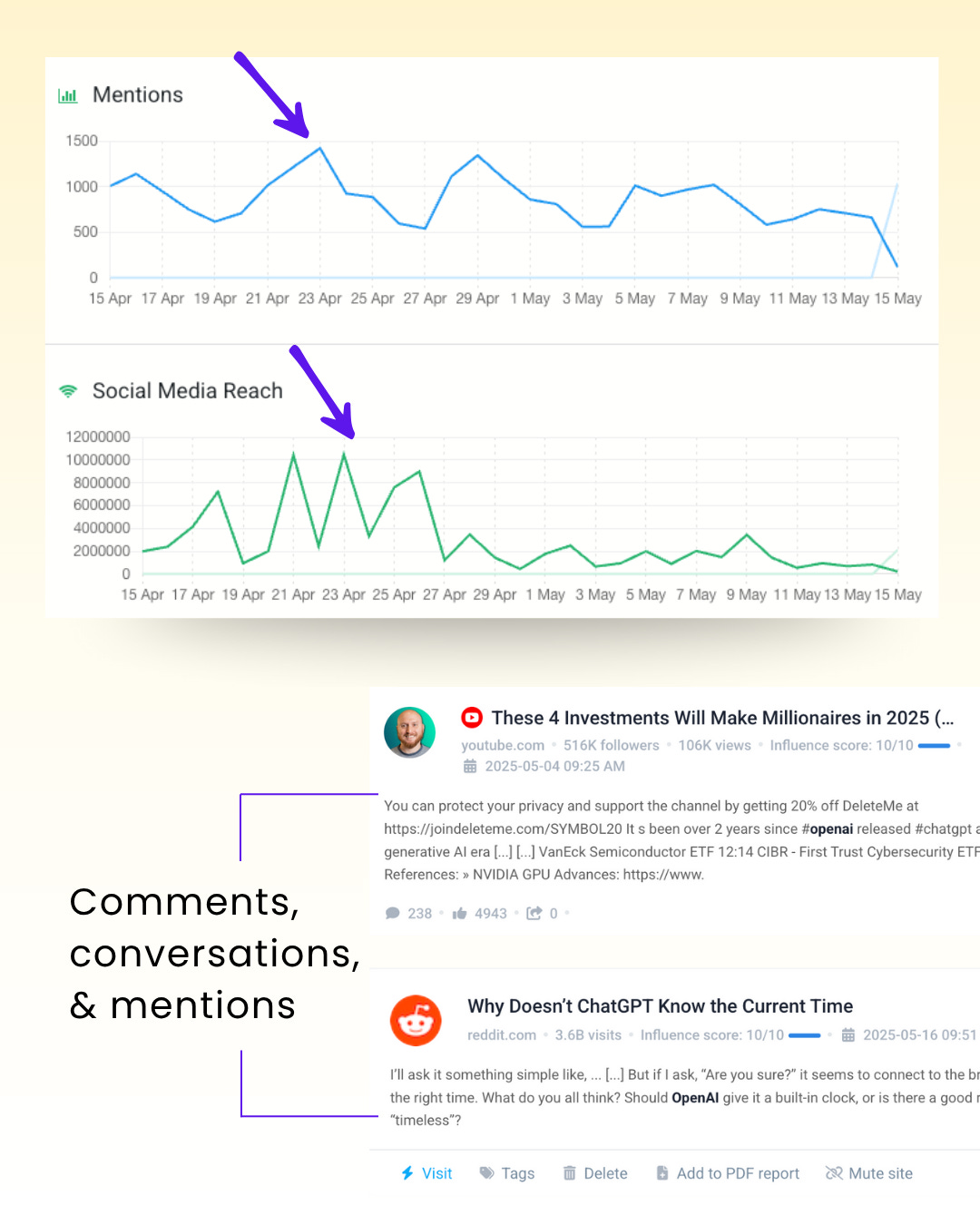My experience working with B2B companies has taught me that most GTM strategies fail not because of bad ideas, but because they were built on assumptions.
But here’s the thing:
Your B2B buyers are constantly giving you feedback. The problem is that companies either aren’t listening, or don’t know how.
Why does this matter?
Because when you do listen, what you get out of it is priceless. You bring your GTM back in sync with how buyers actually think, act, and buy.
And that’s the foundation for everything else your GTM depends on.
So, this week, I’m sharing two feedback loops I use with clients:
→ One external loop: social listening
→ One internal loop: campaign + CRM insights
Feedback loop #1: Social listening
Your buyers are already telling you what to say, where to show up, and what to build. You just have to listen.
Here are 4 ways social listening helps your GTM. I used Brand24 to show exactly how to do it in practice:
1. Double down on content that resonates
→ Spot the content that gets the most mentions and reach, and figure out why it hits.
→ Look at comments, conversations & sentiment to see what your buyers actually care about. Then turn that feedback into content ideas that are more likely to land.
2. Improve your messaging
→ See how real people describe their problems, needs, and what they’re looking for.
→ Use their exact words to refine your messaging and positioning.
3. Find where your ICP hangs out
→ Map out where the actual conversations are happening - Reddit, Twitter, niche communities, and beyond.
→ Put your focus where your buyers already spend time, and where your competitors are getting attention.
4. Catch trends before they take off
→ Get alerts when brand or topic mentions spike.
→ These early signals can reveal rising trends, shifting buyer sentiment, or competitor moves, giving you time to act before everyone else.
You get it. This is just scratching the surface of what social listening can do for your GTM.
Feedback loop #2: Campaign & CRM insights
Sometimes the best GTM signals are hiding in plain sight, inside your own CRM and campaign data.
Here’s how you can use them:
1. Target the right buyer personas
→ Start by looking at your own CRM data- 6 to 12 months back. Who actually triggered pipeline? Who moved through the funnel and closed?
→ Focus on those who are experiencing the problem you solve and start the sales process, not just the C-suite or VPs.
2. Validate your messaging
→ Analyze both quantitative signals (like CTRs & shares) and qualitative signals (like comments).
→ Refine your messaging on the website and other channels based on best-performing campaigns.
3. Optimize your channel mix and budget
→ Use pipeline sources to identify which campaigns and channels drive pipeline & revenue effectively.
→ Track both leading indicators (e.g., funnel conversion rates, high-intent signups, SQLs) and lagging indicators (e.g., cost per opportunity, CAC payback, sales cycle length).
→ Then budget strategically based on pipeline impact, not lead volume, shifting from quantity to quality.
This is where GTM breaks or scales
Your GTM works a lot better when it’s not a one-way plan.
Without feedback loops, you’re flying blind, guessing what to say, where to spend, and who to target.
But when you build your GTM around real buyer signals, from social conversations to pipeline data, everything sharpens:
Your messaging & content resonate
Your targeting improves
Your budget actually works harder
Your GTM stays focused
And the data backs it up:
Companies that use real-time customer feedback grow revenues 4-8% above market (Bain & Company). Even so, up to 60% of marketing budgets are wasted on misaligned messaging and channel mix (Gartner).
You don’t need more ideas. You need better inputs.
And that starts with the right feedback loops.
Between the lines
I should point out: feedback loops can’t replace actual customer research. And that’s an important distinction.
Let me explain.
Social listening and campaign or CRM insights are incredibly useful for spotting what’s resonating and what’s not. They help you adjust quickly, stay aligned, and move faster.
But they’ll never tell you the full story.
If you want to understand why buyers choose you (or don’t), you still need to have real conversations. The kind where people open up about their goals, blockers, the business process they want to improve, decision-making process, and more.
For me, the best insights often come from the mix - signals at scale, plus a handful of in-depth interviews that connect the dots
Use both. That’s where GTM clarity really happens.
Thanks for reading & see you next Saturday!
Alon
P.S. New here? Check out the latest topics.
P.P.S. When you're ready, here are 3 ways I can help you.










